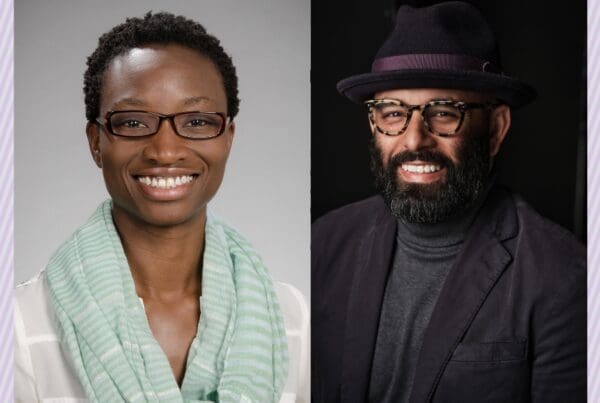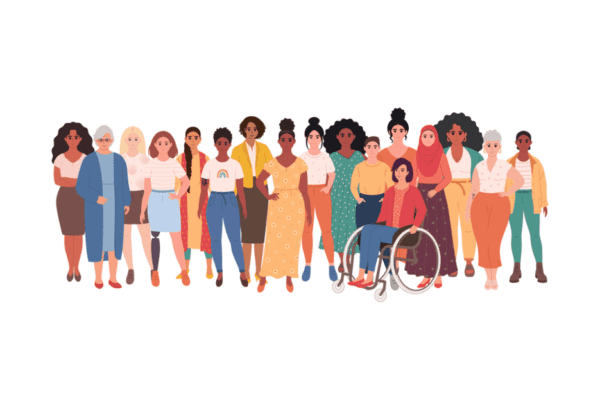Highlights | Supporting female faculty
- In the past year, a survey found that 20% of female faculty at UW Medicine have experienced gender-based discrimination or harassment.
- The problem isn’t unique to UW Medicine, but our organization is taking important steps to reduce it.
- The Women in Medicine and Science committee helps support women faculty.
- There are resources for women to empower them to report incidents and advance their careers.
- Everyone can and should speak up for workplace equity.
Though our work culture is becoming more inclusive, people still experience bias and discrimination — which is why efforts to correct and counteract them are still badly needed.
As part of the 2022 UW School of Medicine Women Faculty Day event, the Women in Medicine and Science (WIMS) committee presented findings from several surveys showing that female faculty and trainees at UW Medicine experience higher rates of gender discrimination than expected.
Identifying the problem is the first step toward fixing it, which is exactly what the committee and leaders throughout our organization are working to do.
Female faculty face bias and discrimination
Results from this year’s climate surveys of women faculty and trainees surprised Michelle Cabrera, MD, a pediatric ophthalmologist and chair of the Women in Medicine and Science (WIMS) committee.
“The UW Climate Survey found a rate of about 20% of female faculty in the past year who had experienced sexual harassment and gender discrimination. That’s considered a high rate,” she says.
Surprisingly, even fields like pediatrics, where women are more prominently represented, had high reported rates of gender discrimination — 50% of the women surveyed in a separate Department of Pediatrics survey said they had negative experiences.
“Women from many departments and hospitals within the UW School of Medicine feel that gender discrimination is interfering with work success, job satisfaction, inequities in pay and promotion, and that they are underrecognized because of their gender,” Cabrera says.
It’s important to note that women experience discrimination differently based on the intersection of their other identities, such as their race, sexual orientation and more. Women of color, for example, often experience racism and sexism at the same time, something that can and has happened at UW Medicine.
What UW Medicine is doing to fight sexism
For Trish Kritek, MD, EdM, a critical care physician and vice dean for faculty affairs for the UW School of Medicine, finding ways to make the workplace more equitable is part of her job.
She and her colleagues in Academic Appointments and Compensation conduct salary equity reviews for faculty in each department to work to minimize inequitable pay practices. They also examine how long it takes female faculty to get promoted in comparison to their male counterparts.
“I also meet one-on-one with faculty all the time. It’s not uncommon that faculty raise concerns, such as challenges getting promoted or experiencing everyday microaggressions,” Kritek says.
Working toward restorative, not punitive, justice
For some people who experience sexual harassment and sexual assault, traditional methods of seeking justice or safety — such as involving law enforcement or a Title IX office — may not result in healing.
“Having to retell their experience over and over and possibly not be believed can retraumatize victims, and seeking punishment for perpetrators often fails to rehabilitate them and instead breeds resentment. This can create a culture of silence where you’re not allowed to talk about it,” Cabrera says.
Seeking to offer an alternative approach, Cabrera encourages more open dialogue, with resources available through the Office of Healthcare Equity (OHCE). They facilitate discussions among faculty who are impacted by significant interpersonal conflict, such as gender discrimination and sexual harassment. Some of the discussions will serve as a safe space for women to share their experiences and support each other.
Other discussions will bring women and harassers into the same space — with the woman’s permission, of course — to have an open conversation about what happened. This type of discussion is based on a restorative justice model, where the goal is for participants to reach an increased understanding. Rather than focusing on punishment for the perpetrator, it focuses on healing for the person affected.
“It isn’t that perpetrators are not held accountable, but it’s an opportunity to try to help everyone achieve transparency and understanding, and maybe the people who have been perpetrators will realize what they did wrong and improve,” Cabrera explains.
Helping women faculty to be heard
The WIMS committee meets monthly to discuss new initiatives to advance workplace equity. They also offer peer support and mentorship to female faculty who are interested.
Kritek partnered with the OHCE and others to create the bias reporting tool, which women and anyone else who has experienced bias can use to report the incident.
Creating more opportunities for female faculty
The WIMS committee, office of faculty affairs and OHCE have created programs and other opportunities for female faculty to network with peers, find mentors, pursue leadership roles, advance their careers and more.
Some of these opportunities include:
- A Women Faculty Leadership Series of discussions to empower women with tools to help them thrive in their careers. The next session is on Sept. 20, 2022, from 4-5 p.m.
- Awards for faculty who have served as excellent mentors for women.
- The Rising Leaders program, a yearlong, cohort-based leadership education program that sponsors around 35 faculty each year, most of whom are women.
- Women Faculty Day, a conference for female faculty to come together, share their work and successes and discuss their experiences and challenges.
How to advocate for female faculty
Whether or not you identify as female, anyone can use these strategies to advocate for equity in the workplace — for women and for anyone who faces discrimination.
Recognize the difficulties — and find ways to move past them
Cabrera and Kritek have conversations about and confront incidents of sexism on a regular basis in their work advocating for women faculty, and they know it isn’t always easy to speak up.
Even if you have good intentions, you might not always step up when you want to. It’s OK to make mistakes, and sometimes you may not have the right answer in the moment but need time to think and go back to it.
Just know that every time you try to increase equity, it makes a difference.
“What helps me speak up in the moment is thinking about what kind of workplace I want the next generation of women to work in,” Kritek says. “In order for them to thrive, we need to improve the climate in which we work now.”
Amplify women’s voices
“There are times when women speak up and their contribution isn’t heard in the same way as others,” Kritek explains.
Her strategy to counteract this is to amplify what female colleagues say, particularly in group meetings or settings.
This could look like you saying: “I want to amplify what she just said,” and then restating it to draw attention to the original point.
Speak up and correct bias
If you witness a female colleague being treated unfairly, say something. This applies in settings with colleagues as well as patients.
For example, if a patient assumes a female senior resident is a medical student, kindly correct them.
“You don’t have to make a huge production of it. Pause and correct the incorrect assumptions. Part of being a bystander is really just naming it when something happens,” Kritek says.
This is especially important for people in leadership roles to do, she says. And while sexism doesn’t directly affect men, them stepping up to speak out against it shows allyship.
However, it’s important for everyone, even if they aren’t in a leadership position, to help advance workplace equity.
“So much of this is about culture in the workplace, what do colleagues think, how are they supportive when people speak out. A lot of times they’re not and that sets the tone that ends up changing policy and action, how people talk and think about it. It’s important to recognize when we’re inadvertently promoting the status quo. Culture becomes critical for change. We often don’t realize it, but that’s something all of us can be a part of,” Cabrera says.


